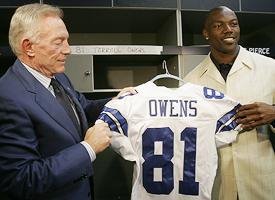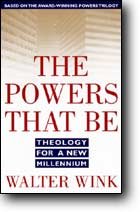So, watermelons. The ones on the buses and trailers -- theoretically, they could be on a truck within a couple of hours. Once the melons are cut and loaded and brought to the warehouse, things get a little more complicated than the cutting and pitching stage. It's an assembly line of sorts. Everything you see in the store, the big boxes, the pallets, the barcodes -- they are all assembled and arranged and stuck-on in a big warehouse sitting in a field which is more or less the middle point of all the land my uncle and cousin farm.
The assembly line: one or two people are in charge putting the boxes together and keeping the pallets on the line; two or three people pitch the melons onto the first of three conveyer belts the melons will go down before finding their proper box; the rest of the crew stand in the boxes on the line, pick the melons off the belt and stack the melons in the boxes (which is actually quite hard to do -- just you try to stack a bunch of round objects on top of each other). K. and M., the two youngsters, stand near the buses and put barcodes on each and every melon.
The melons come off the buses and go down the conveyer belt. There are people who grade the melons -- if there is anything wrong with a melon (a scar, some sort of misshapen-ness or if it is busted), they toss the melons in a bin that will ultimately sit in the sun and rot. Most of the time, there isn't anything wrong with these melons, taste-wise -- they just don't look good. So they are thrown away. Which is a really big waste, as the outside of a melon really has nothing to do with the taste of a melon. But stores don't want ugly melons. Because people don't buy ugly melons. Maybe one out of every six or seven is thrown away.
The melons are then graded again based on size. Stores don't want melons over 22 pounds, so melons larger than that are taken off of one conveyer belt and placed on another, where they are binned up to be sold to peddlers (the people you see on the side of the road or at a farmer's market). Between 1/3 and ½ of the melons are too large for stores.
The melons that pass through the first two check points are then placed in the boxes you see in stores. When one box is filled (45 melons per box), a lid is placed on the box, and a forklift picks up the pallet and moves it into the warehouse. 54 boxes is the typical truck-load.
This cycle of cutting, loading, unloading, grading, boxing, etc., continues until it's too dark to cut melons.
So ends the descriptive phase of my summer. It's really hot. I should throw that in. Way too hot, in my opinion. Hinges of hell hot. I'm also not sure how my analysis will work, since I don't know just an awful lot about the business aspect of things, and the other major issue -- migrant workers -- is something I'm still thinking about.
One of the most notable things about the watermelon industry – if you can call it that – is that it is terribly inefficient. The farmers aren’t inefficient, necessarily. The economics of it all are inefficient. (Two quick parentheticals – 1. I know nothing about economics or farming and, also, 2. I think my experience would go for any fruit production, not just watermelons.)
What I mean by inefficient. The first thing I mean by inefficiency really is just my way of talking about things that just don’t make sense. It’s inefficient in that there has to be a better way, a more efficient way, to accomplish the same thing. It takes, if I remember correctly, approximately $1000 an acre, out of the farmers pocket, just to get a watermelon to the point where it is ready to harvest. It takes another $600 per acre to actually harvest the crop. So, say a farmer has 100 acres of melons, the farmer must, each year, take out a minimum of $160,000 in loans. Which come due immediately after harvest. They take out that much money in hopes of making, oh, a modest income of maybe $25,000. To me, that makes almost no sense. Yet, there’s no other way to grow a crop without borrowing that much money every year. (This is why so many farmers go bankrupt – one bad year, one bad day, and the crop is wiped out. This year was one of those years. A hail storm wiped out the entire crop, and the watermelons had to be replanted).
I'm not sure how to get around this particular inefficiency. A farmer has to borrow money, even though it means living on the edge of bankruptcy for the better part of every year. I know there are some crops that are subsidized by the government in some way or another. I'm not sure about watermelons. I don't think they are, but I'm not positive about that. I don't know enough about the subsidization of crops to really comment too much about it. (Anyone with any knowledge, please share.) One of the cures of this particular inefficiency has been corporate farming -- where corporations buy and run farms. Then farmers actually don't work for themselves. They don't have to take the risks, but they also get much less of the profit. This has led to the decline of family farming. Now, this has been the source of a lot of debate -- the end of the family farm -- but I'm a fence-sitter here. At least I'm a fence-sitter about the theory of corporate farms. The age of the family farm has probably passed, regardless of the goodness or badness of this. The problem with the practice of corporate farming, traditionally, has been that corporations come in after a farmer has gone bankrupt, buy all of the land or equipment, kicks the family out of the only home they've ever lived in, and hires someone to do the job on the cheap.
The second inefficiency: the waste. A good half of the crop is wasted. And for the most part, there is nothing wrong with the melons that are wasted. The melons that are too big for stores are usually sold to peddler. There are ways around this step, but they mostly involve genetic engineering and / or using more chemicals. Both of which are expensive and controversial, as a lot of people don’t seem to like the idea of genetically altering produce and most people (including most farmers) don’t like using lots of chemicals. Anyway, since these large melons are technically throw-away melons, if farmers are to sell them, they have to sell them fairly cheaply. Usually at a loss, but that's still better than nothing. So, for something like $2 a melon, peddlars can buy all they want. They turn around and sell them for between $6 and $8 a melon. Which is really a good deal for them, and they really are helping farmers out. But it's a shame that perfectly good melons are wasted to farmers.
The third inefficiency: the red tape. A farmer, heavily invested in a crop, actually can’t sell their watermelons. No lie. Grocery stores and these big fruit distribution centers will NOT buy a melon from a farmer. Because there’s a company – or rather an entire industry – of brokers who have somehow managed to place themselves between the farmer and the market. Now, I actually kind of liked the man who was the broker for my family’s watermelons. Nice guy. Family man. Made me laugh quite a bit. But, roughly 20% of the cost of a watermelon is due to brokers. And, umm..., they don’t really do anything. I mean, they answer the phone and make sure trucks arrive on time and what-have-you, but a good half of the time, my uncle was doing this anyway. But, regardless, if a farmer wants to sell his crop, he has to actually sell it to a broker, who tacks on his “finder’s fee” and then sells it to grocery stores.
This makes no sense to anyone, except the broker. It costs the farmer a hefty bit of his profit. It costs consumers, as melons would be quite a bit cheaper if this step were skipped. But it is what it is. The only way around this problem is if a farmer raised enough melons to make a deal with some grocery chain directly (which would be lots more melons than my family raises), or if they had enough money to just "sit" on their melons until some store got desperate enough for melons that they'd be willing to skip the broker step. Most farmers are neither rich enough nor big enough, land-wise, to do either of these things.
Sorry for the long post. If you made it this far, then I’ll let you know that next week, JU and I will have disagreements over immigration and migrant farm workers.



